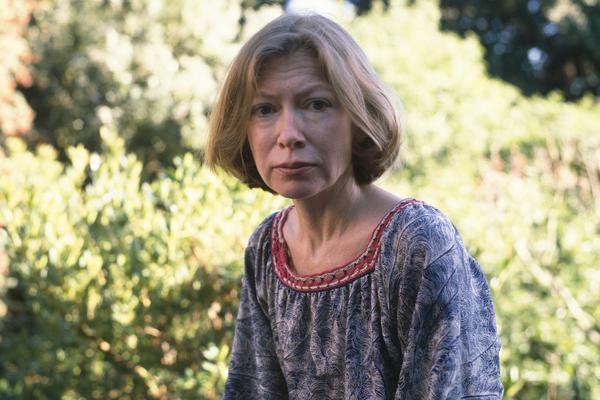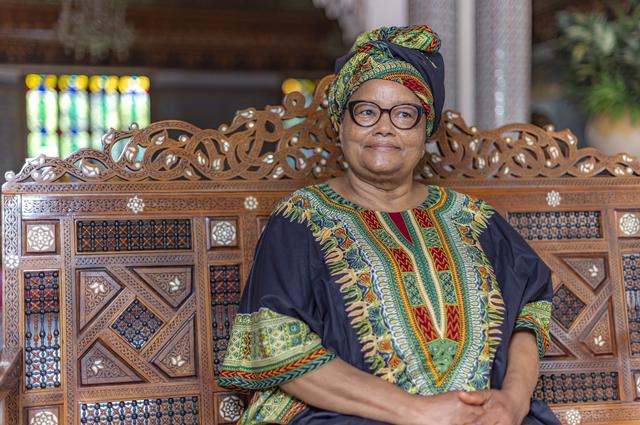Literary Icon Joan Didion Dead at 87 - Rolling Stone
The novelist, essayist, critic and journalist Joan Didion died Thursday, December 23 of Parkinson's disease.
Joan Didion, acclaimed American author and icon of new journalism, best known for books like Play It as It Lays, The White Album and The Year of Magical Thinking died on Thursday, reports the New York Times. She was 87 years old.
Didion died at her Manhattan home after a battle with Parkinson's disease, a spokesperson for her publisher confirmed. “Didion was one of the most incisive writers and one of the most discerning observers in the country, can we read in the press release. His highly successful works of fiction, essays and memoirs have received numerous accolades and are considered modern classics. »
Didion was a prolific and multifaceted writer, beloved as much for her novels, memoirs, and screenplays as for her essays, cultural critiques, and investigative reporting. Early in her career, she was the go-to columnist for California at the height of its counterculture, and managed to create a new kind of essay (the “I'm leaving New York” essay) with her famous article from 1967, “Goodbye to All That“. Along with her husband, John Gregory Dunne, Didion wrote screenplays for films such as Panic in Needle Park, the 1976 adaptation of A Star Is Born, and an adaptation of her own novel, Play It as It Lays.
As part of her extensive political reporting, she has covered everything from the civil war in El Salvador to American political campaigns; and as a critic she studied how the media shaped perceptions of major events (she published one of the first challenges to the guilty verdict in the case of the Central Park Five, which was later overturned) . In 2005 Didion won the National Book Award for Nonfiction and was nominated for the Pulitzer Prize for The Year of Magical Thinking, her memoir chronicling her life and grief after Dunne's sudden death in 2003, as well as illness. death of her daughter Quintana.
Didion was born on December 5, 1934 in Sacramento, California. Her family had lived in the state for five generations, a fitting biographical detail for a writer who would go on to expertly capture the endless allure, promise, and underlying chaos of the Golden State.
“I grew up in a dangerous landscape, declared Didion to The Paris Review in 1978. I think that people are more affected than they think by the landscapes and the climate. Sacramento was a very extreme place. It was very flat, flatter than most people would imagine, and I still prefer flat horizons. Sacramento's climate was as extreme as the landscape. There were two rivers, and these rivers were flooded in the winter and dry in the summer. Winter was made of cold rain and fog. In the summer it was 38, 40, 45 degrees. These extremes affect how you approach the world. It turns out that if you're a writer, extremes appear. This is not the case if you sell insurance. »

Didion studied English at the University of California, Berkeley, and in her senior year won an essay contest sponsored by Vogue. Rather than take advantage of the trip to Paris she had won, she travels to New York to work at the magazine and quickly transitions from ad copywriter to associate editor. Alongside her work for Vogue, Didion collaborated with several other magazines and published her first novel, Run, River, in 1963. After her stay in New York, during which she met and married Dunne, Didion returned to California and began to to be noticed by his articles in Life and The Saturday Evening Post.
Part of the new journalism movement, Didion's reporting incorporates literary elements, blending her meticulous observations of the world with deeply personal anecdotes. His dispatches on the idealism, glitz, and sordid aspects of 1960s California were collected in his famous 1968 collection, Slouching Towards Bethlehem.
In 1970, Didion published her second novel, Play It as It Lays, which told the story of a struggling young actress trying to break into Hollywood while facing a host of personal demons. It is perhaps no coincidence that during this decade Didion and Dunne also made their own forays into Hollywood writing screenplays: Panic in Needle Park (about a group of heroin addicts in New York) allowed up to Al Pacino to become a standout, while their adaptation of A Star Is Born, starring Barbra Streisand and Kris Kristofferson, was a box office success.
During the 1970s, Didion's reporting and fictional works became increasingly political. His 1977 novel, A Book of Reason, is set in a Central American country in the midst of revolutionary upheaval; a few years later, she did a report in El Salvador on the civil war in that country. His 1984 novel Democracy told the story of a senator and CIA agent at the end of the Vietnam War, while his work on the exiled Cuban community in Miami became his 1987 book. , Miami. Although she eventually moved away from more traditional political reporting, politics (and the way it is disseminated and interpreted by the mass media) remained at the center of her reviews and essays, which were later published in books like After Henry and Political Fictions.
At the turn of the new millennium, Didion remains fascinated by the history and the present of California, on which she returns in 2003 in Where I Was From. In 2017, in South and West: Notebooks, she paired observations of her childhood in California with texts based on old notes taken during a trip with Dunne to the Deep South in the 1970s.
But one of her most acclaimed works remains The Year of Magical Thinking, adapted for the theater in 2007. In 2011, Didion published a complementary book, Le bleu de la nuit, in which she evokes the death of her daughter , as well as parenting and aging. Both books are intensely personal, and in a 2012 conversation with author Sloane Crosley at the New York Public Library, Didion explained that her memoir echoed some of the early personal writing she wrote for Vogue. . “[Many] people read these articles and, for the first time, I was asked for life advice. I hated that. I stopped writing these articles because I couldn't take on this role, and I hadn't written anything that got this kind of response until The Year of Magical Thinking; [with this novel] suddenly people were talking to me at airports. Usually they had something really terrible happen to them, and I just learned to…not take it so personally. I learned that I could talk to them without taking it personally, so I didn't have to stop writing. »
Jon Blisten
Translated by the editor







